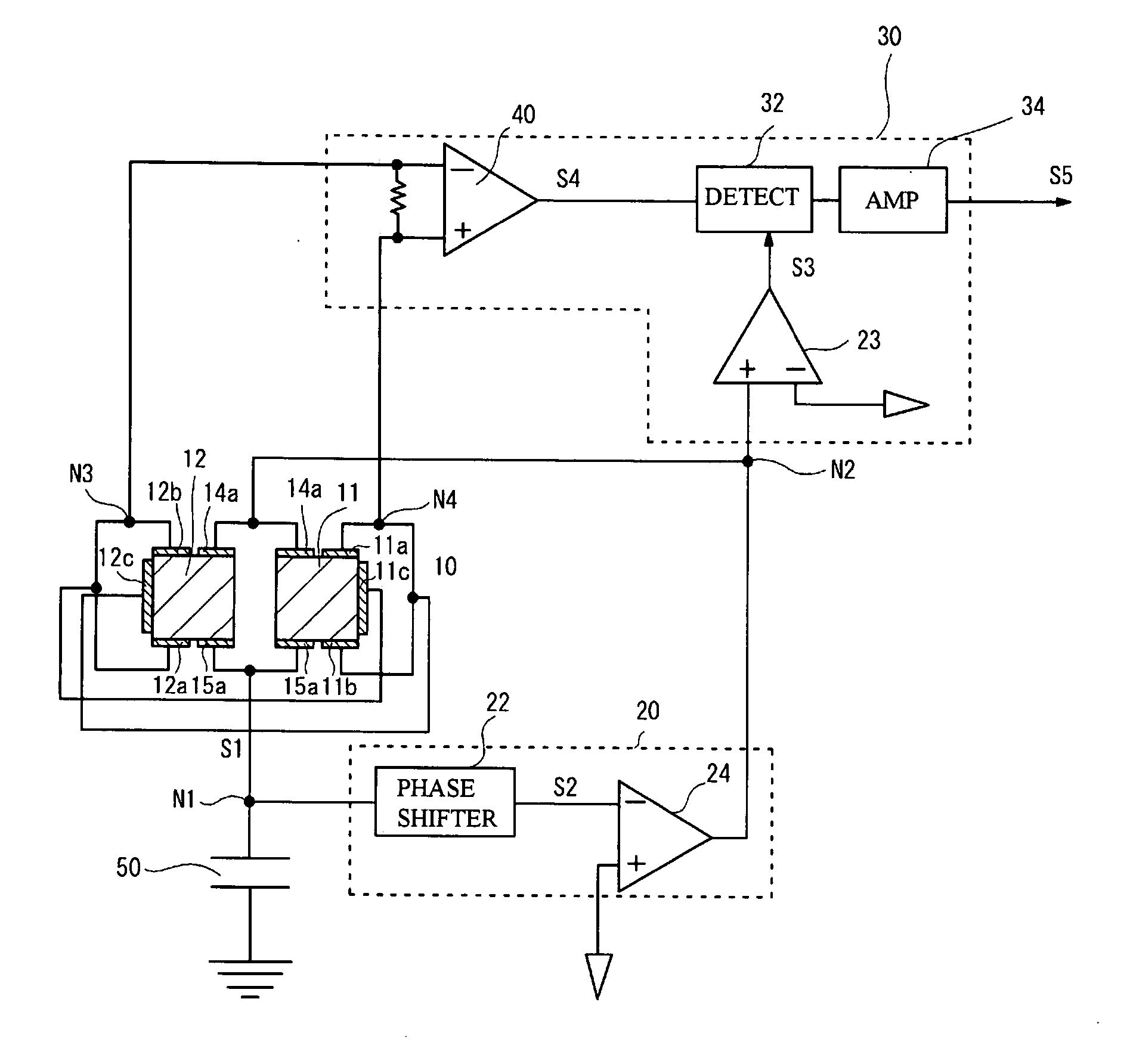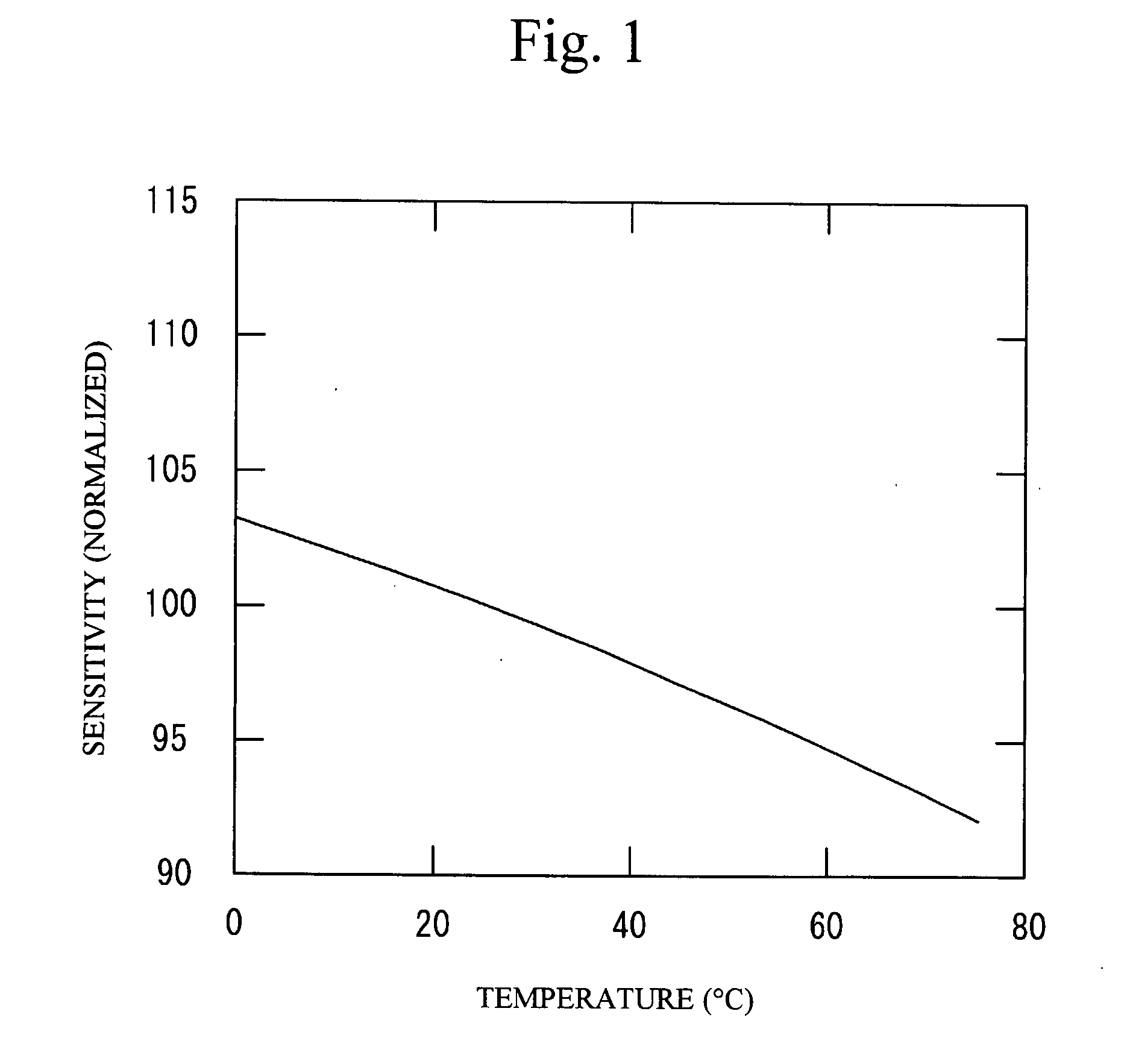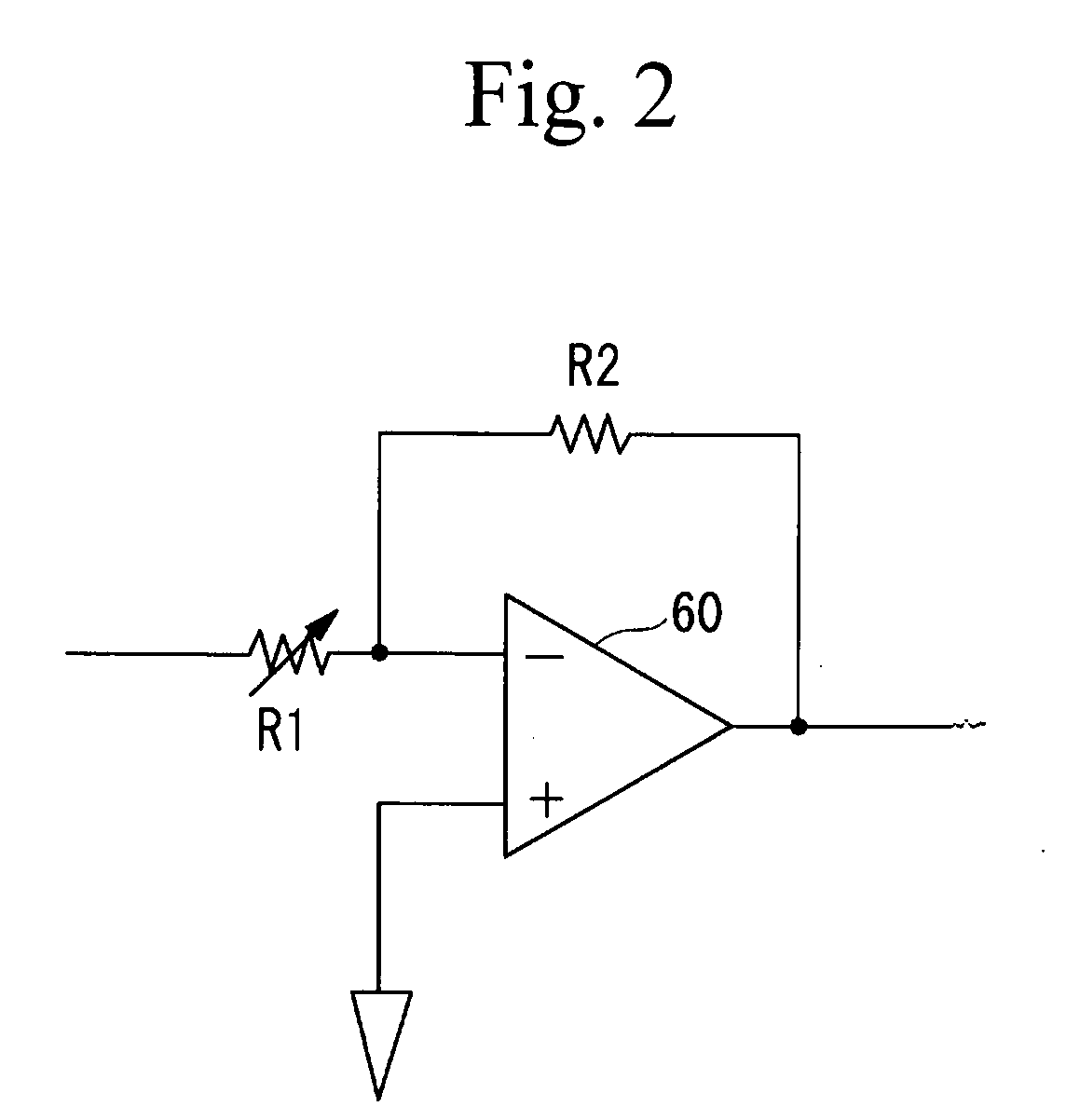Vibration sensor
- Summary
- Abstract
- Description
- Claims
- Application Information
AI Technical Summary
Benefits of technology
Problems solved by technology
Method used
Image
Examples
first embodiment
[0025] A first embodiment is an exemplary angular velocity sensor having a tuning-fork type vibrator as a vibration body. FIG. 3 is a block diagram of a sensing system in accordance with the first embodiment. The sensing system includes a vibration body 10 (tuning-fork type vibrator), a drive circuit 20 and a sense circuit 30. Drive electrodes 15a of the vibration body_10 are grounded via a capacitor 50. The drive circuit 20 is connected to a node N1 between the drive electrodes 15a and the capacitor 50. The capacitor 50 is connected between the drive circuit 20 and ground. The drive circuit 20 includes a phase shifter 22, and a phase inversion amplifier 24. The phase shifter 22 delays the phase by 90 degrees to change the phase of a drive signal S1 and produce a resultant signal S2. The phase inversion amplifier 24 inverts the phase of the output signal S2. The output signal of the drive circuit 20 is applied to drive electrodes 14a of the vibration body 10. Sense electrodes 12a, 1...
second embodiment
[0038] A second embodiment is an exemplary vibration sensor in which the sensitivity of the sense signal can be compensated for using the temperature characteristic of the phase of the aforementioned phase shifter 22. Parts (a) through (d) of FIG. 12 show a case where the phase of the reference signal S3 changes while the phase of the sense signal S4 does not change. Part (a) of FIG. 12 shows the reference signal S3. When the reference signal S3 has a phase S32, the reference signal S3 is in phase with the sense signal S4, and the output signal S5 is the maximum as shown in part (c) of FIG. 12. The phase different at that time is the reference phase difference. When the reference signal S3 has a phase S31, the phase of the reference signal S3 leads to the sense signal S4. When the reference signal S3 has a phase S33, the phase of the reference signal S3 lags behind the sense signal S4. Thus, when the reference signal S3 has the phase S31 or S33, the output signal S5 is reduced as in...
PUM
 Login to View More
Login to View More Abstract
Description
Claims
Application Information
 Login to View More
Login to View More - R&D
- Intellectual Property
- Life Sciences
- Materials
- Tech Scout
- Unparalleled Data Quality
- Higher Quality Content
- 60% Fewer Hallucinations
Browse by: Latest US Patents, China's latest patents, Technical Efficacy Thesaurus, Application Domain, Technology Topic, Popular Technical Reports.
© 2025 PatSnap. All rights reserved.Legal|Privacy policy|Modern Slavery Act Transparency Statement|Sitemap|About US| Contact US: help@patsnap.com



